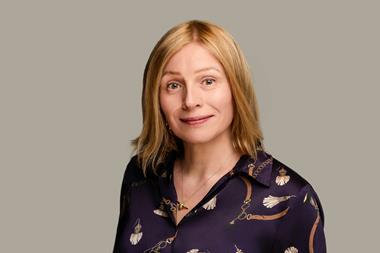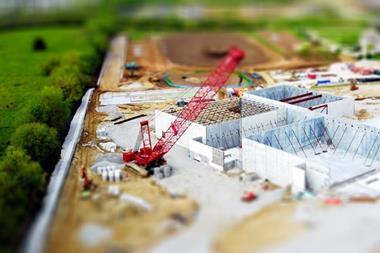At a time when real estate investing is still something of an inscrutable art to many pension funds, the Nordrheinishe Arzteversorgung scheme (NAEV) has devised a groundbreaking approach to building a portfolio. The creation of a pyramidal structure for its real estate investment has won it the accolade of Best Medium Pension Fund, sponsored by IVG Immobilien.
Founded in 1959, the NAEV is a professional pension scheme for the federal state of North Rhine Westphalia, its 50,000 members belonging to the medical profession. As an alternative to the general mandatory pension insurance system in Germany, the NAEV offers a pension scheme based on a mixed system, which is made up of capital cover and a pure adjustable contribution procedure. This ultimately produces a capital cover ratio of around 45%.
The scheme's total capital -about €7.6bn as at end-March 2006 — is invested on the basis of asset liability analyses which are drawn up each year.
The largest single asset class areSchuldscheindarlehen, which make up nearly 27% of the overall portfolio, followed by equities (20%), and bonds and mortgages (both about 18%).
The real estate component is, however, lower than the others, at just under 14%.
However, by the end of this year, the real estate segment is expected to rise to a target range of between 12 and 16%, compared with a target of 15 - 19% for equities, and 17 -21% for both bonds and mortgages.
The NAEV says it invests in real estate in order to balance out stock market volatility, since property cycles are uncorrelated with other financial cycles. In the same way, the property component of the portfolio also acts as a hedging instrument against inflationary and deflationary trends. All this means that holding real estate helps reduce the overall risk of the portfolio.
But the NAEV says that real estate can also give attractive, competitive yields with manageable risk, compared with other assets. It also offers a large enough investment universe. And real estate also gives the ability to achieve risk-adjusted returns in different property sectors. However, for some time the fund has increasingly wanted to lower its portfolio risk by raising the level of diversification. It says this was needed, in terms both of regional distribution, and of the most suitable investment vehicle selected in each case.
So over the past 18 months, the NAEV has been restructuring its real estate portfolio to adopt a pyramid approach.
The geographical spread of the real estate portfolio now covers Europe, the US and Asia, while investments have been made through a variety of financial vehicles.
The base of the pyramid is occupied by direct real estate investments in five German cities: Berlin, Dusseldorf/Cologne, Frankfurt, Hamburg and Munich. At present, this forms the biggest segment of the real estate portfolio: €670m, or 63.5% of the total, as at the end of March 2006.
Outside this, all the other real estate holdings are held indirectly.
The middle slice of the pyramid contains indirect real estate investments in restricted funds, known as ‘Spezialfonds', mainly using individual funds. These invest throughout Europe, excluding Germany.
This segment makes up the smallest portion, at €144m, or 13.7% of the real estate portfolio.
The apex of the pyramid contains indirect real estate investments held through various participation structures, including the most indirect form of all - real estate investment trusts (REITs) — and property stock funds which invest in REITs on a worldwide basis.
These own properties in Europe, the US and Asia, and currently have a value of €241m, or 22.9% of the real estate portfolio.
The NAEV also holds minority stakes in listed German property companies. This includes a stake under 5% in IVG, Germany's biggest property group, which was bought 18 months ago.
The NAEV says that this pyramid structure gives it several benefits.
First, it enables the fund to gradually increase the level of diversification of the portfolio, by investing internationally using a disciplined investment process. It also helps in the selection of the most appropriate investment vehicles and managers.
Secondly, the pension fund is able to develop the international element of the portfolio in a transparent and controlled way.
Finally, the pyramid provides a flexible and dynamic investment structure which is able to react quickly to rapid changes in a globalised world with international capital flows.
But the fund is not content to stop there.
It says that as time goes on, its direct real estate investments will continue to be replaced by indirect investment structures. It will develop investment opportunities in diversified REITs and real estate share portfolios and funds.
At a structural level, the pyramidal investment structure may even be turned on its head. This means that the REITs and real estate shares would form the bottom plank, with direct investment at the peak. However, if this is to be possible adjustments in the supervisory regulations will be needed.
Nevertheless, the pyramid structure means that good foundations have been laid, to ensure a controlled and transparent internationalisation of the entire real estate portfolio in line with the NAEV's aims.













No comments yet